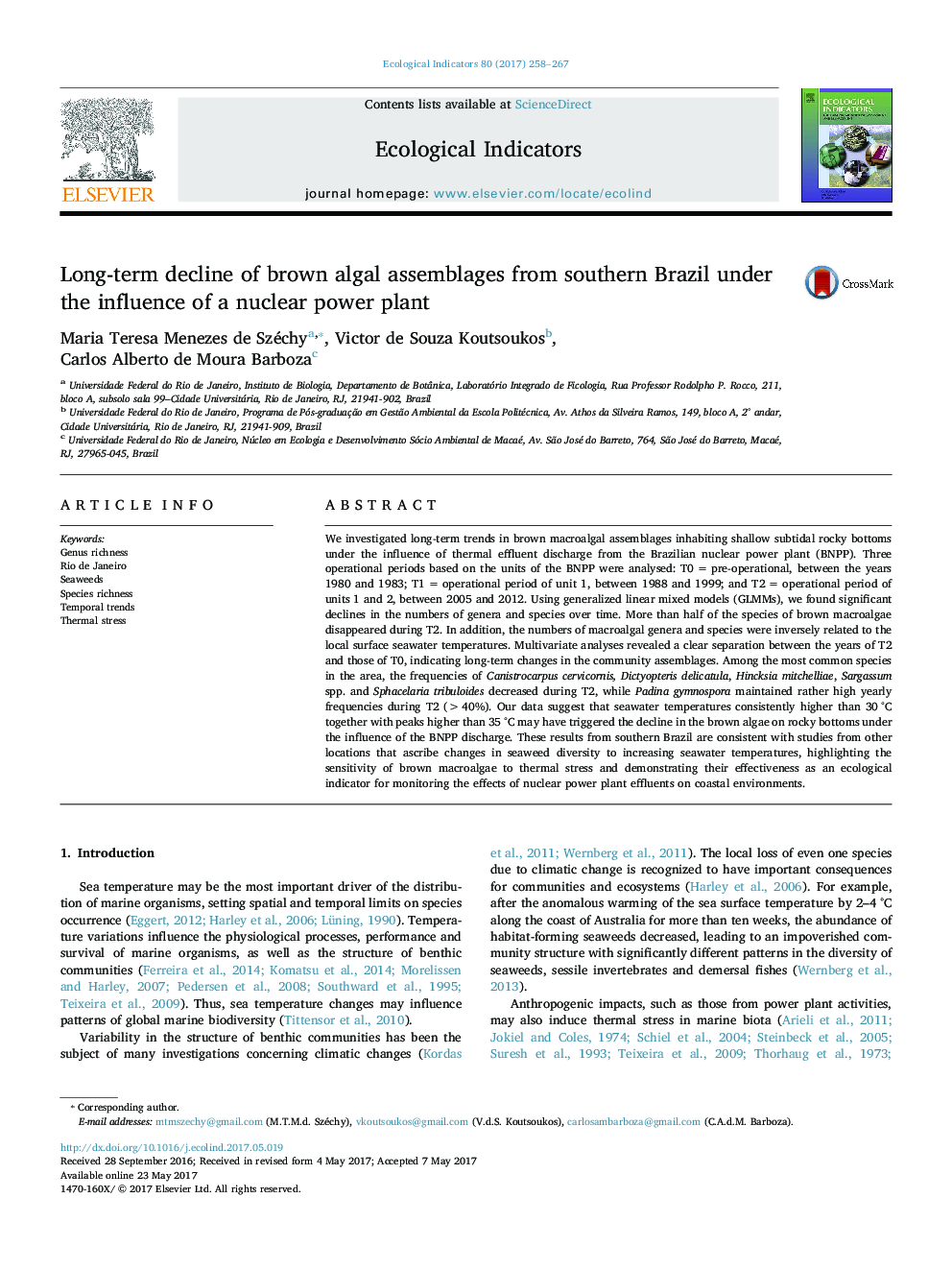| کد مقاله | کد نشریه | سال انتشار | مقاله انگلیسی | نسخه تمام متن |
|---|---|---|---|---|
| 5741388 | 1617122 | 2017 | 10 صفحه PDF | دانلود رایگان |
- We assessed long-term trends in brown algae under the influence of thermal effluents.
- Surface seawater temperatures and the numbers of brown algae were inversely related.
- Multivariate analyses showed clear long-term changes in the frequency of brown algae.
- Brown macroalgae are efficient indicators of the effects of power plant effluents.
We investigated long-term trends in brown macroalgal assemblages inhabiting shallow subtidal rocky bottoms under the influence of thermal effluent discharge from the Brazilian nuclear power plant (BNPP). Three operational periods based on the units of the BNPP were analysed: T0 = pre-operational, between the years 1980 and 1983; T1 = operational period of unit 1, between 1988 and 1999; and T2 = operational period of units 1 and 2, between 2005 and 2012. Using generalized linear mixed models (GLMMs), we found significant declines in the numbers of genera and species over time. More than half of the species of brown macroalgae disappeared during T2. In addition, the numbers of macroalgal genera and species were inversely related to the local surface seawater temperatures. Multivariate analyses revealed a clear separation between the years of T2 and those of T0, indicating long-term changes in the community assemblages. Among the most common species in the area, the frequencies of Canistrocarpus cervicornis, Dictyopteris delicatula, Hincksia mitchelliae, Sargassum spp. and Sphacelaria tribuloides decreased during T2, while Padina gymnospora maintained rather high yearly frequencies during T2 (>40%). Our data suggest that seawater temperatures consistently higher than 30 °C together with peaks higher than 35 °C may have triggered the decline in the brown algae on rocky bottoms under the influence of the BNPP discharge. These results from southern Brazil are consistent with studies from other locations that ascribe changes in seaweed diversity to increasing seawater temperatures, highlighting the sensitivity of brown macroalgae to thermal stress and demonstrating their effectiveness as an ecological indicator for monitoring the effects of nuclear power plant effluents on coastal environments.
Journal: Ecological Indicators - Volume 80, September 2017, Pages 258-267
